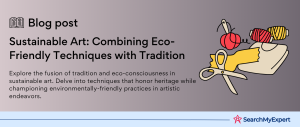Collaborative Projects in Illustration
Defining Collaborative Illustration Projects
Collaborative illustration projects – a fusion of creativity! Imagine artists from different backgrounds, styles, and experiences coming together to create something extraordinary. It’s not just drawing or designing; it’s a symphony of ideas, each stroke infused with a unique perspective.
Benefits: A Kaleidoscope of Advantages
- Diversity of Styles: When artists collaborate, the final product is a mosaic of various artistic styles.
- Learning and Growth:
Artists learn from each other, picking up new techniques and approaches. - Increased Creativity:
Collaboration often leads to innovative ideas that a single artist might not conceive. - Networking and Exposure: Artists gain exposure to each other’s audiences, broadening their own fan base.
Unique Challenges and Opportunities
- Challenge:
Merging distinct styles can be tricky. Finding a balance where all contributions shine equally is an art in itself. - Opportunity:
These projects often lead to unexpected, groundbreaking results, as artists push each other out of their comfort zones.
Personal Anecdotes and Success Stories
Remember that project where artists from around the globe illustrated a single story? Each page was a new world, different yet beautifully cohesive. Or the time when two illustrators, one with a flair for realism and another for abstract art, joined forces? The result was mesmerizing – a blend of sharp reality softened by dreamy abstraction.
Building a Team
Diverse Roles in a Collaborative Project
Illustrators: The Visionaries
- Core creators of visual content.
- Bring unique styles and techniques.
Writers: The Storytellers
- Develop narratives or concepts.
- Essential for projects like graphic novels or themed collections.
Designers: The Aesthetes
- Focus on layout, typography, and overall design.
- Ensure the project is visually cohesive.
Project Managers: The Organizers
- Oversee the project’s progress.
- Handle logistics, deadlines, and coordination.
Marketing Specialists: The Promoters
- Develop strategies to showcase and sell the final product.
- Important for commercial success.
Finding and Connecting with Collaborators
Online Platforms
- Websites like Behance, Dribbble, or ArtStation.
- Great for showcasing portfolios and discovering artists.
Social Media and Forums
- Platforms like Instagram, Twitter, or Reddit.
- Facilitate direct engagement and community building.
Art and Design Events
- Workshops, conferences, or local meet-ups.
- Offer opportunities for face-to-face networking.
Tips for Effective Teamwork
- Open Communication: Establish clear channels for discussion.
- Respect and Recognition:
Acknowledge each member’s contribution. - Regular Meetings: Schedule check-ins to monitor progress.
- Shared Vision: Ensure everyone is aligned with the project’s goals.
- Trust Building:
Encourage honesty and transparency.
Conceptualizing and Brainstorming
Generating Creative Ideas as a Team
Mind Mapping: Unleashing the Power of Visual Thinking
- Use diagrams to visually organize information.
- Encourages free-flowing thoughts and connections.
Role-Playing: Step into Your Audience’s Shoes
- Adopt different perspectives to understand diverse viewpoints.
- Sparks empathy and deeper understanding of the audience.
Rapid Prototyping: Fast-Track Your Ideas
- Quickly create rough versions of ideas.
- Allows for immediate feedback and iterative development.
Establishing a Shared Vision
- Defining Objectives:
What do we want to achieve? - Identifying the Target Audience: Who are we speaking to?
- Clarifying the Message:
What story are we telling?
Determining Style, Tone, and Technicalities
Style:
Cohesive Yet Diverse
- Blend individual artistic styles to create something unique.
- Ensure it resonates with the intended audience.
Tone:
Setting the Emotional Mood
- Should the artwork be whimsical, serious, or surreal?
- Tone should align with the project’s message.
Technical Aspects:
Nuts and Bolts
- Decide on medium (digital, traditional), size, format.
- Ensure technical feasibility and practicality.
Workflow and Communication Strategies
Choosing the Right Tools and Platforms
Project Management Software: Stay Organized
- Options like Trello, Asana, or Monday.com.
- Track progress, assign tasks, and set deadlines.
Shared Workspace Tools: Collaborate in Real-Time
- Google Drive, Dropbox, or Figma for file sharing.
- Essential for easy access and editing.
Communication Channels: Keep the Conversation Flowing
- Slack, Discord, or Microsoft Teams for daily communication.
- Regular check-ins and updates.
Effective Communication Strategies
Sharing Ideas: Foster a Safe Space
- Encourage open and judgment-free sharing.
- Every idea is a stepping stone to innovation.
Providing Feedback: Constructive and Empathetic
- Focus on the work, not the person.
- Be specific, objective, and supportive.
Resolving Creative Differences: Find Common Ground
- Acknowledge different viewpoints.
- Seek solutions that align with the project’s vision.
Maintaining Focus and Momentum
- Regular Milestones: Set short-term goals to track progress.
- Respecting Creative Freedom: Allow individual expression within the project’s framework.
- Balancing the Big Picture and Details: Keep an eye on overall objectives without losing sight of the finer aspects.
Technical Collaboration and Integration
Collaboration Methods for Specific Creative Tasks
Character Design: Merging Individuality and Uniformity
- Artists contribute their distinct style to different characters.
- Ensures character diversity while maintaining thematic coherence.
Scene Building: Crafting Worlds Together
- Each illustrator works on different elements (background, objects).
- Collaborative storytelling through visual elements.
Coloring and Texturing: A Symphony of Hues
- Colorists and texture artists add depth and emotion.
- Consistent color palette unifies the artwork.
Integrating Individual Contributions
- Cohesive Vision: Regular reviews to ensure alignment.
- Blending Techniques: Combining various styles smoothly.
- Feedback Loop:
Continuous exchange of ideas and suggestions.
File Handling and Visual Consistency
Version Control:
Avoiding Chaos
- Use tools like Git or dedicated graphic design version control systems.
- Track changes and revisions effectively.
File Management:
Organized and Accessible
- Structured file naming and storage protocols.
- Cloud storage for easy access and backup.
Maintaining Visual Consistency:
The Key to Unity
- Create style guides and reference materials.
- Regular cross-checking against established standards.
Project Management and Execution
Establishing a Clear Timeline and Dividing Responsibilities
- Timeline Creation:
Break down the project into phases with specific timelines. - Role Assignment:
Assign tasks based on each team member’s strengths.
Staying Organized and On Track
Deadlines and Milestones: Set achievable targets.
- Helps in monitoring progress and staying focused.
Progress Reports: Regular updates.
- Facilitate transparency and accountability.
Check-in Meetings:
Frequent team gatherings.
- Discuss developments, hurdles, and solutions.
Addressing Potential Challenges
- Conflicting Schedules: Implement flexible working hours and asynchronous communication.
- Technical Difficulties:
Have backup plans and technical support in place. - Creative Disagreements:
Foster a culture of constructive feedback and open dialogue.
Presentation and Promotion
Choosing the Best Platform for Showcasing
Portfolio Websites: Personalized Showcases
- Platforms like Behance or Adobe Portfolio.
- Great for a tailored, professional presentation.
Online Galleries and Social Media: Reaching a Wide Audience
- Instagram, Pinterest, or ArtStation.
- Ideal for engaging with a broader community.
Exhibitions: The Physical Space
- Local galleries or art shows.
- Offers a tangible experience of the artwork.
Effective Promotion Strategies
- Social Media Campaigns:
Leverage the power of hashtags and shares. - Collaborations with Influencers:
Expand reach within the art community. - Press Releases and Blogs: Tell the story behind the project.
- Email Newsletters: Keep your audience updated and engaged.
Benefits of Collaboration for Career Development
- Skill Enhancement: Learn from peers and diverse techniques.
- Networking: Build connections with other artists and potential clients.
- Portfolio Diversification: Add varied and collaborative works to your portfolio.
- Reputation Building:
Being part of successful projects boosts professional standing.
Conclusion
In the realm of illustration, collaboration is not just about combining talents; it’s a journey of shared creativity and growth. Through the steps outlined in this guide, we’ve seen how diverse skills and perspectives can come together to create something truly extraordinary. From assembling a dynamic team to navigating the intricacies of project management, each phase in a collaborative project is an opportunity for learning, innovation, and professional development.
As we conclude, remember that the essence of collaboration lies in the harmony of individual contributions, culminating in artworks that speak volumes. Whether it’s through seamless integration of styles, overcoming challenges, or the final act of presenting and promoting the work, collaborative projects in the illustration are a testament to the power of united creativity.
Experience artistic excellence with our Illustrators Company.
Table of Contents
Toggle






